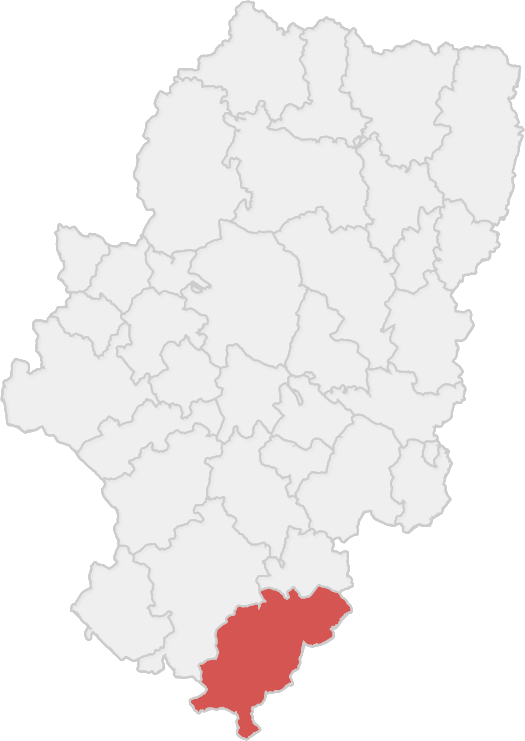Gúdar-Javalambre
Against the arbitrary nature of this rugged territory, Gúdar-Javalambre draws its silhouette, irregular and at the same time captivating, being one of the finest-looking areas in all Teruel. High peaks slightly over two thousand metres, rivers that come to life and meander at their leisure through fields and meadows, villages full of history, places with charm… a repertoire of sensations to provide the most diverse pleasures.
Teruel
While some are debating whether Teruel exists or not, others take advantage of all the excellent features offered by many of its regions to explore the most amazing places in these areas. Action rather than immobility to show that Teruel not only exists but also displays a huge heritage where wonderful trips can be taken. One of these nooks, bordering on Castellón and Valencia, is Gúdar-Javalambre.
The ski season is held at the two Teruel resorts, Valdelinares and Javalambre, which represent a tremendous tourist attraction, also supporting the natural, cultural and gastronomic heritage of the localities in the region.
Step by step, town by town
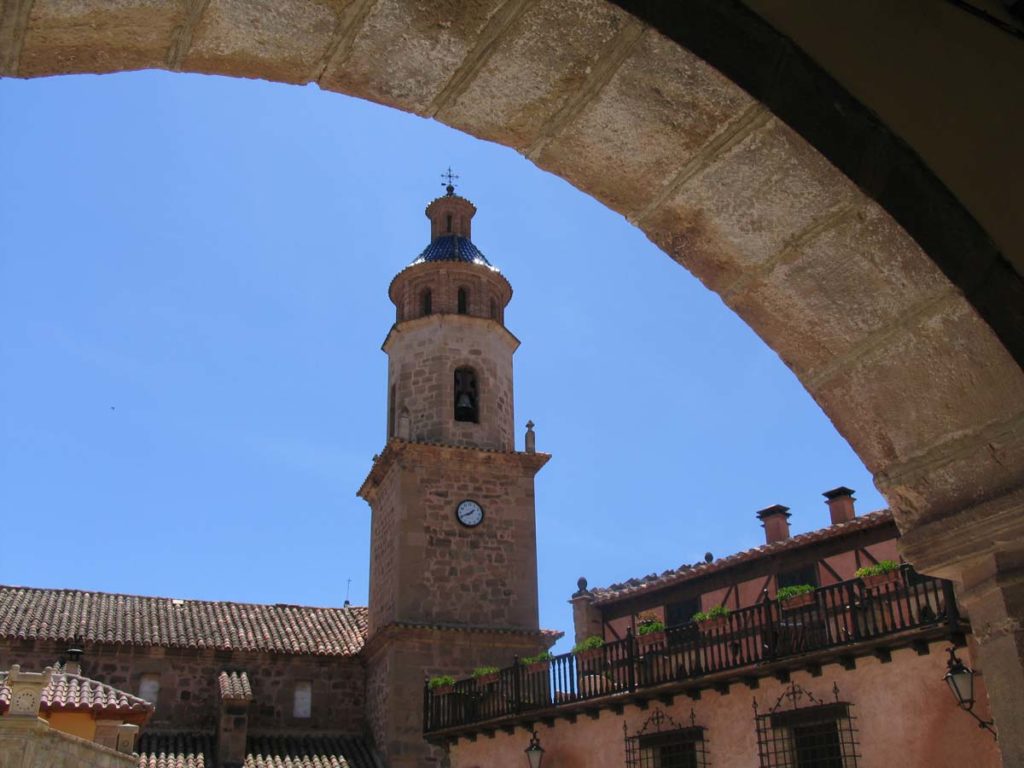
Most of the municipalities that are part of the region of Gúdar-Javalambre retain their urban quaintness because of the medieval routes, vestiges of Gothic architecture and the Renaissance and neoclassical signs that make them static museums. And amid history, castles, walls and mansions, the natural environment bathes in colour every corner.
Located at the south-eastern end of the Cordillera Ibérica and comprising the river Mijares, the mountain ranges of Gúdar-Javalambre are experiencing an important growth in tourism due to the historical remains in their localities, as well as the richness of their landscape.
In the municipality of Albentosa, for example, we can highlight the impressive surroundings of the river of the same name, and in the neighbouring town of Manzanea our attention is drawn to the church of Our Saviour, the remains of the medieval castle or its enclosed surroundings, where the Fuente del Gavilán [the Sparrowhawk fountain], Río Paraíso [Paradise River] and the ravine Las Fuentes [the fountains] are particularly worth visiting.
Also, near Javalambre, another of the necessary stops falls in Camarena de la Sierra, a small town where, besides contemplating the church and the Hermitage of San Pablo, you can practice adventure sports throughout the year
In the historic centre of La Puebla de Valverde, in between the mountain ranges, the church of Santa Emerenciana, the hermitage of Ntra. Sra. de Loreto and the houses of Los Iguales and los Pilones stand out. And once inside Gúdar, in addition to Mora de Rubielos and Rubielos de Mora, we will go deep into the most secluded spots to contemplate the history of Alcalá de la Selva, the archaeological sites in the vicinity or delight in the canyon of the river Alcalá. In Valdelinares, the highest village in our community, the church of Ntra. Sra. de las Nieves, the hermitage of the Virgen de Loreto or the old Town hall, will be reference points when walking through the streets.
If to access Valdelinares, we have taken the road that passes through Alcalá de la Selva, on our way back we can go along the road that passes through Linares de Mora and from there to Nogueruelas and Rubielos de Mora.
In any case, the routes we take in this region will be subject to change since there are lots of good reasons for being lured into diversions into places off the beaten track but equally inviting.
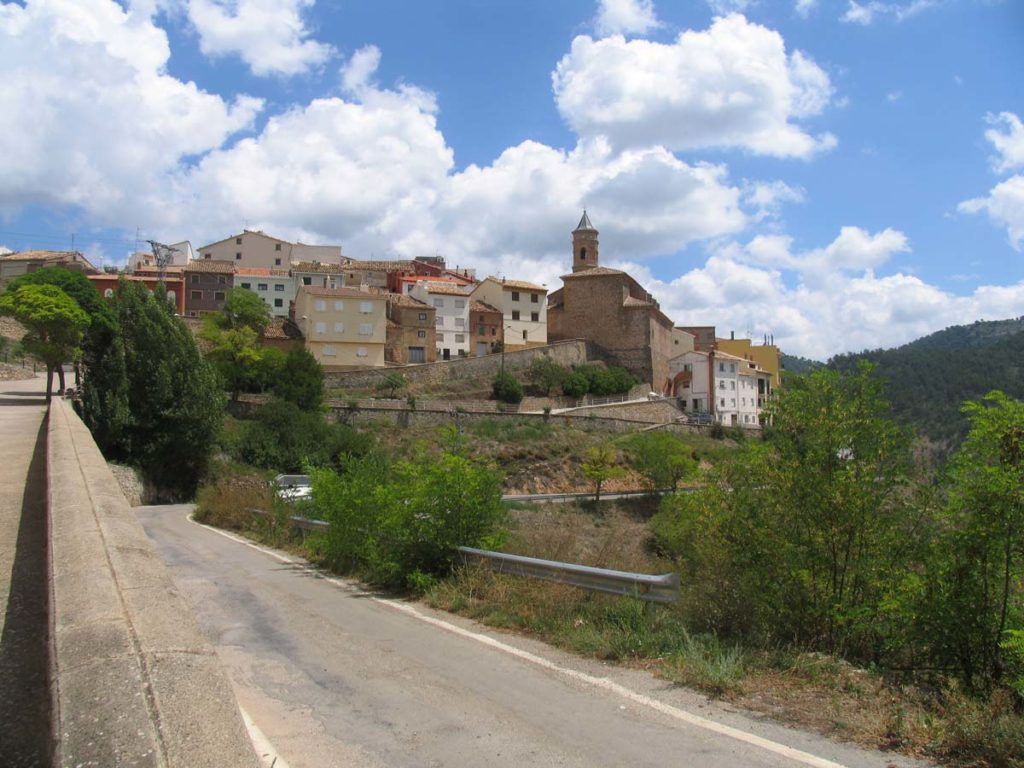
How to get there
The main access road, starting from Teruel, is the N-234 until you reach La Puebla de Valverde. This point can be taken as an equidistant place between the two mountain ranges and, therefore, a crossroads to go either right to Javalambre, or left to Valdelinares. If we take the A-228 road we will cross the entire Sierra de Gúdar and, if we want direct access to the Sierra de Javalambre, it is preferable to take the direct turn-off that leaves from Puebla de Valverde. Even though many of the tracks pass through winding areas between the mountains, they are comfortable, and they meander through extremely attractive landscapes.
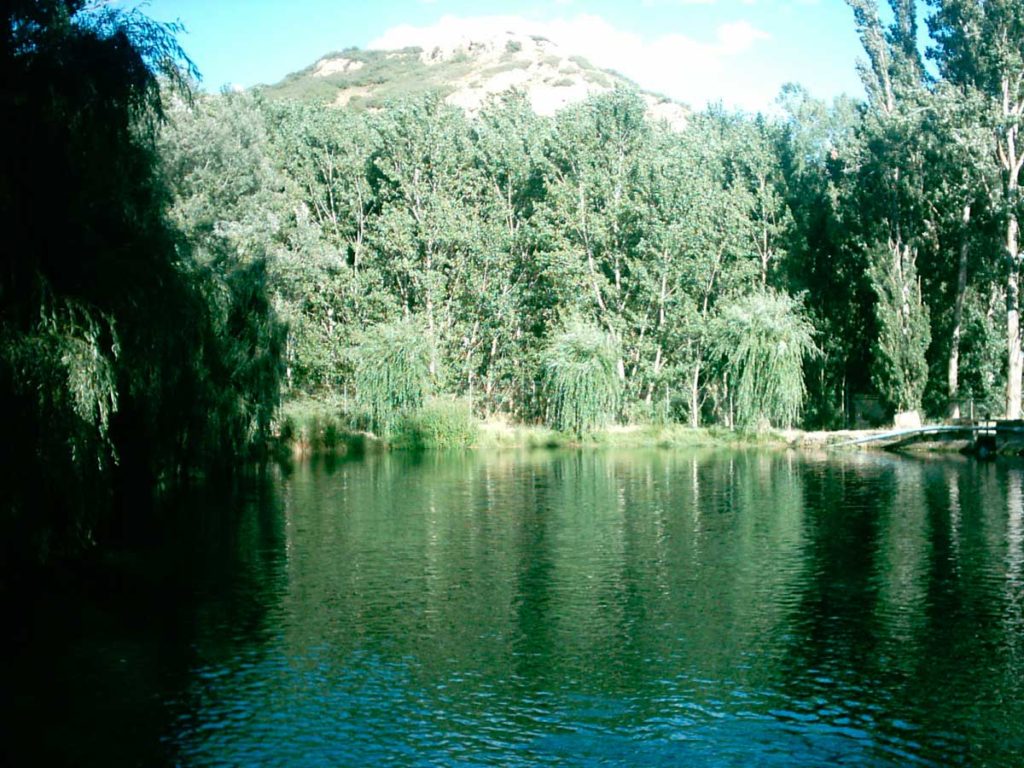
Natural Heritage
The valleys and mountains that wind through this territory offer magnificent landscapes and beautiful spots that pass through every one of the villages in the region.
In Gúdar you can enjoy virgin nature and rest alongside springs, pine forests, rivers and meadows. In Javalambre, for its part, this same natural environment, practically untouched, can serve as an incentive to complete an unforgettable journey.
Some of the places to visit are the peaks of Javalambre and Peñarroya, with altitudes that are just over 2,000 metres, the plains of the river Mijares, the pine forests of Castelvispal or the juniper thickets of Los Olmos, among others. However, you only need a small nook of the many that appear on roads and slopes to stop along the way and enjoy an unbeatable panorama.
Historical tourism in Mora de Rubielos
The old quarter of the legendary capital of Gúdar, declared a place of historical and artistic interest, is still the observation post for tourists and travellers. The castle, playing the part of dominant host, her walls, porticos and palaces make Mora de Rubielos a place not to be left out of any commonplace book. It is possible to travel through history.
The historical part of Mora de Rubielos is an encounter with times gone by where we can roam through the maze of streets and squares that give life to this beautiful locality. There are still remains of the walls that protected the town, interspersed between the three gates into the town: The Gateway of the main square, the one into Los Olmos and the one into Las Monjas. And from there, you only need to look up to find the castle.
Facing north-east, an uneven terrain rises up from which the towers that support the structure of the whole building can be seen, inside which stands the open inner courtyard and the various adjoining rooms that form a spectacular cloister. Without a doubt, the Castillo de los Fernández Heredia is one of Mora’s most emblematic sights for the tourist.
Another of the historical vestiges that witnesses the past of this villa nowadays houses the town hall whose ashlar façade belongs to the first half of the seventeenth century. From the lower floor, it is worth highlighting the arcades that are very similar to those of other towns in the province of Teruel such as Formiche Alto and Cella.
And the church of Santa Maria comprises what can be considered the third prong of the touristic trident in Mora de Rubielos, which boasts the distinction of being a national monument since 1944. Sturdy buttresses that reinforce the structure bestow an appearance of solidity. But once inside comes the sensation of softness. The Levantine Gothic style bathes every corner of the spacious temple where chapels, apses, aisles and altarpieces manage to seduce those who cross its threshold.
Living in history
The maze of streets located in the historic centre of Mora is dotted with a magnificent set of houses that randomly shape one of the most awe-inspiring ensembles in all Gúdar-Javalambre. Alternating between ones that present Romanesque or Gothic façades with others that offer a hint of the Renaissance, but always in magnificent and perfectly preserved stone. Some of these houses are Pilón, Marin, the Curate’s House or the house of Cortel de la Fuen del Olmo.
Rubielos de Mora and its charms
Interest in this locality is not confined only to the urban area in which a good number of historical vestiges are to be found. Its variety of landscape, customs, festivals and gastronomy reinforce the tourist potential of this privileged town.
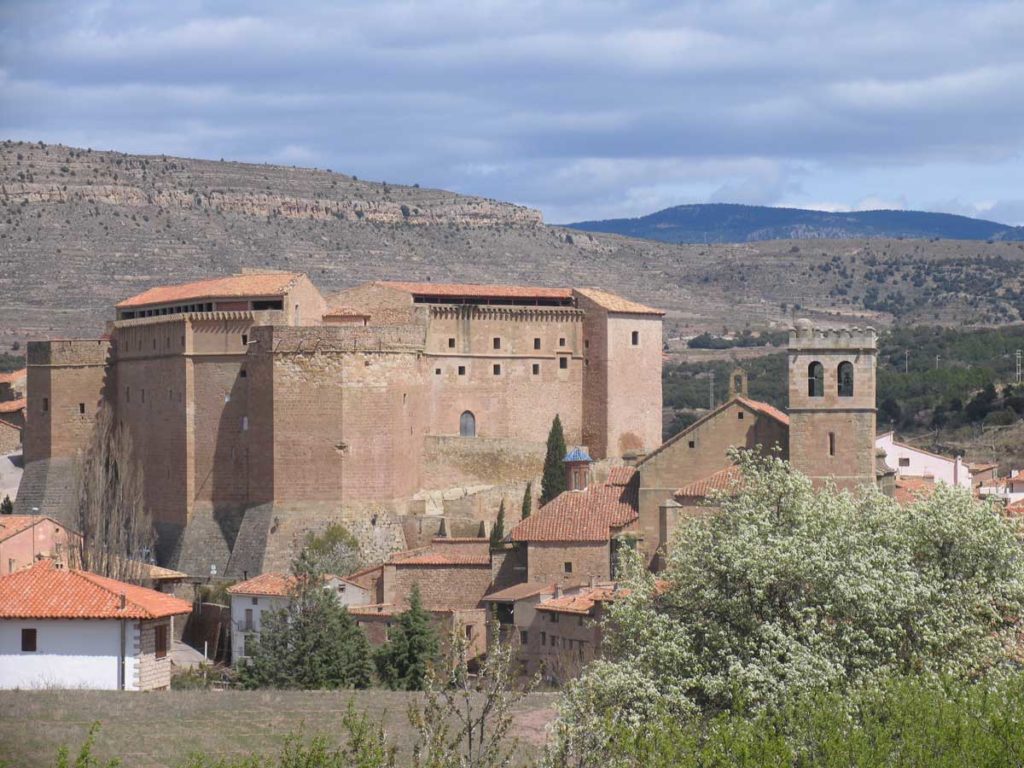
The former collegiate church of Santa Maria la Mayor
A Baroque construction of masonry and stonework in a rectangular layout with a single nave in which there are several chapels on either side. Paintings, altarpieces and grilles serve as the ornamentation of these nooks. This church, whose construction began in the early 17th century, is especially interesting because of its exterior, exhibiting the main portico and the majestic belfry which, from its highest point, dominates the whole urban area of Rubielos. A place that certainly conveys an evocative sensation just like the rest of the buildings and historical constructions.
The places not to be missed on a visit to Rubielos may be limited to an area between the gateways of San Antonio and El Carmen, two tower gates that mark the beginning and the end of a magical itinerary that passes through the most outstanding historical attractions.
Taking as a starting point the first tower gate, going through it and on the right, we find the house of F. Igual, a building in which the carpentry work is impressive. From there, the street leads directly to the Plaza Hispano America, housing the town hall and the Negrita fountain.
In the same square, we also find the house of the Marquises of Villasegura, a beautiful 17th-century building, and the Palace of the Counts of Creixell with one of the most beautiful patios in the entire village.
From the square it is best to go to Las Cuatro Esquinas [The Four Corners], the confluence of the streets Josefa Villanueva, Barberanes and San Antonio. At this point, the palace of the Counts of Florida stands out with its ashlar façade and the gallery of arches on the upper floor. Very close to this palace is also the one belonging to the Marquis de Tosos, in the square of the same name, from where you leave until you reach Joaquin Arnau street and, from there, arrive at the Plaza de los Toros where the so-called House of the Lions, converted today in a hotel, and the house of Vivó-Roca stand.
Other important points of the historic centre are the Casa Lloret, an interesting example of neo-Gothic architecture, and the former Carmelite Convent. After visiting the convent in which the cloisters and the bell tower are of note, we reach the Portal del Carmen, the end point of our visit to Rubielos de Mora.
But an exhaustive visit will not leave aside many other manor houses and religious constructions. Their discovery will depend on the extent to which the charm of this town has captivated the traveller.
Spa
If your outlook on tourism is a healthy and more relaxed one, in the Sierra de Javalambre there lies hidden a magnificent spa in which the beneficial effects of the waters ensure a comforting and relaxing holiday which will be unforgettable.
The spa “El Paraíso”, built in 1930 and lost among a wonderful grove in the municipality of Manzanea, has 132 squares surrounded by nature and tranquillity. Steam room, pressure jet, hydro baths, muds and massages, are some of the thermal and aesthetic treatments on offer.
Rural tourism
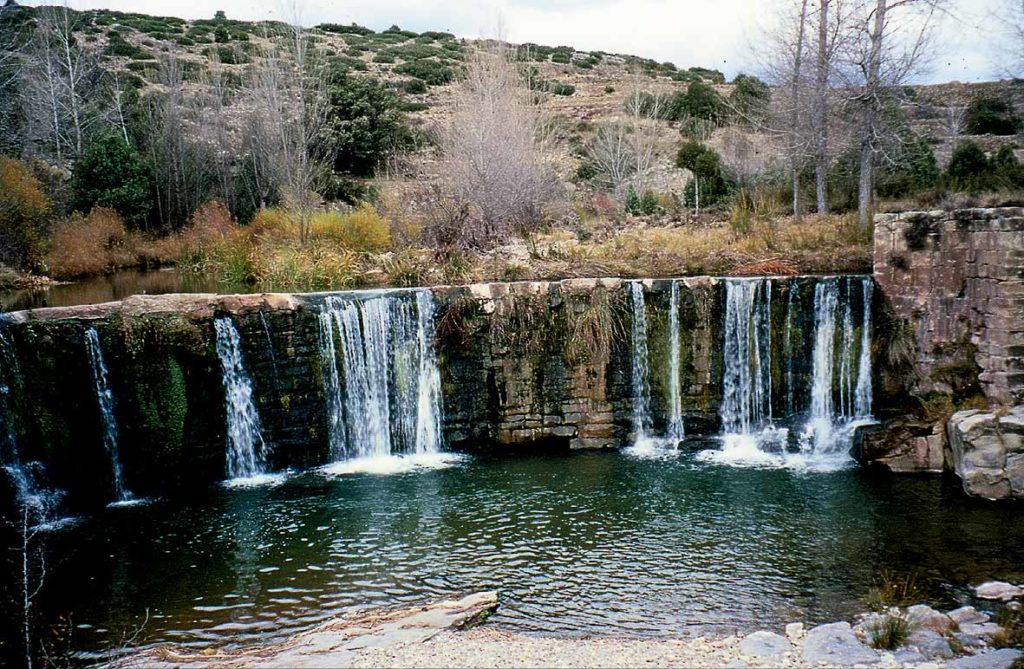
The formula of rural tourism, shown to be one of the most booming, tends to develop in natural scenarios as attractive as those that house the Sierras de Gúdar and Javalambre.
Much of the rural tourism is located in the centre of towns such as Albentosa, Alcalá de la Selva, Camarena de la Sierra, Linares de Mora, Mosqueruela, Ants Alto, La Puebla de Valverde, Manzanera, Nogueruelas, Puertomingalvo, Mora de Rubielos, Rubielos de Mora, Torrijas and Valbona, among others.
In addition to rural tourism, Gúdar-Javalambre also offers hostels, shelters and campsites. Without a doubt excellent reasonably priced alternatives for getting to know all the attractions of this remote territory first hand.
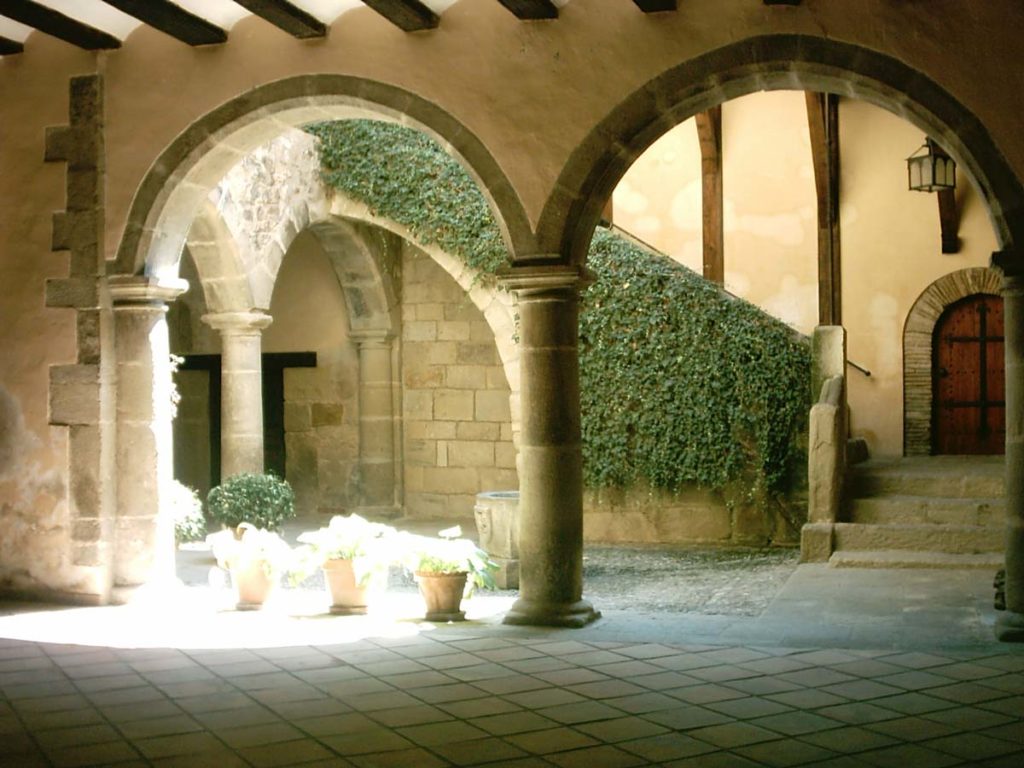
Fiestas and festivals
The summer season is when the major part of the festive calendar of practically all the municipalities of the region of Gúdar-Javalambre takes place with a series of customs and traditions that attract a good number of people from both the province of Teruel and other neighbouring areas.
One of the most relevant events on the cultural agenda is the Puerta al Mediterraneo Summer Festival. It takes place during most of August and outstanding groups from the world of music, theatre and folklore take part.
But surely the most entrenched tradition is the “fire bull”. A custom that in Mora de Rubielos has managed to stand out above others and has been exported to other locations in the Sierras.
In July and August during the patronal festivities held in many of these towns, the streets are flooded with light and colour, streets that also house parallel events such as medieval fairs, sporting activities and a good number of cultural events.
Trails and Walks
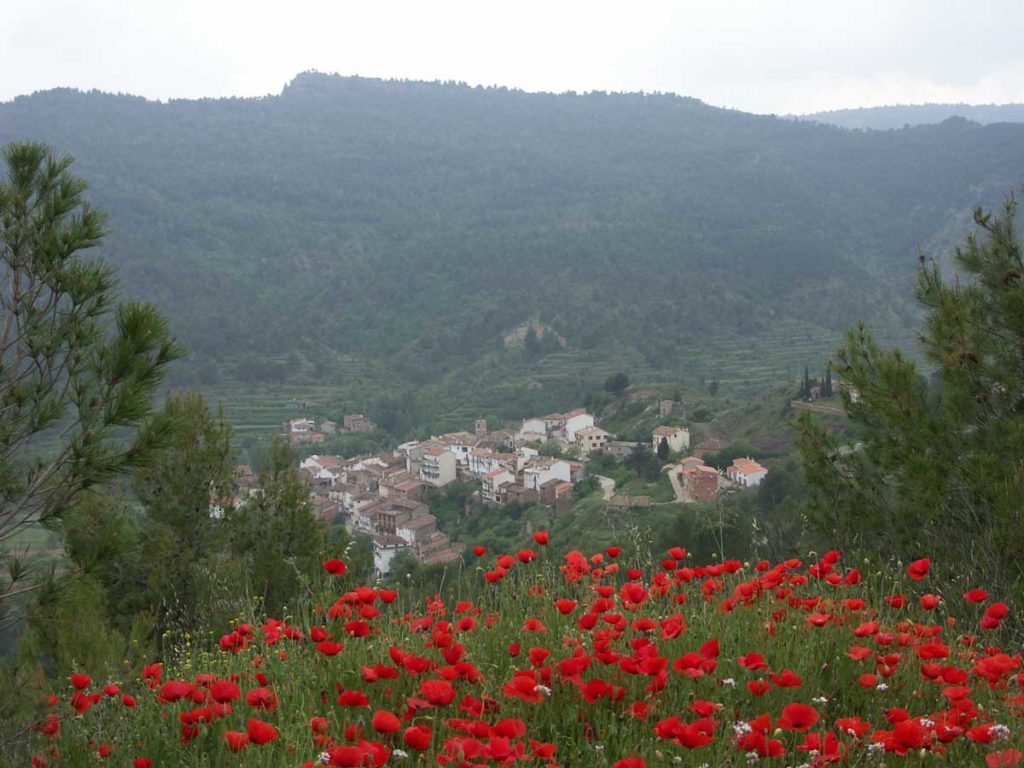
In these two mountain ranges in Teruel, there are a huge number of maintained trails and walks throughout the more than 2,300 square kilometres which go from the highest point in Javalambre to the massif of Gúdar.
In this second mountain range alone, there are more than 500 kilometres of perfectly demarcated and signposted trails. These criss-cross the natural valleys and forests from where the geology of the terrain, the fauna and the vegetation that enclose these enclaves may be enjoyed.
One of the most sought-after routes is the one starting from El Castellar and reaching Alcalá de la Selva with a stopover at the source of the river Mijares. In a little more than three and a half hours, we can cross some of the most beautiful places in Gúdar. Once in Alcalá de la Selva, we will head in the direction of Valdelinares on a full day trip which, on the following day, will continue towards Virgen de la Selva. In total, a thirteen-hour journey that can be undertaken in two stages. It is a comfortable and extremely recommendable hike.
And in Javalambre there are also various paths that, besides walking, are also suitable for mountain biking or horseback riding.
In short, it is one of the territories most suited to the practice of trekking at different levels of difficulty. It is worth discovering.
